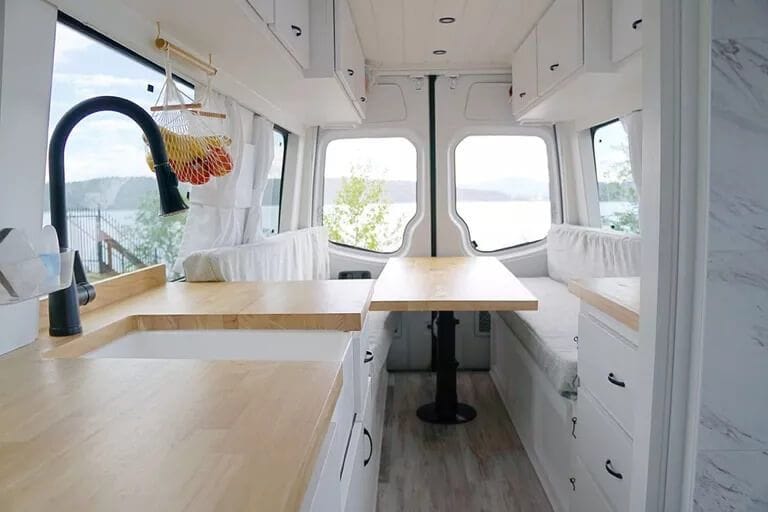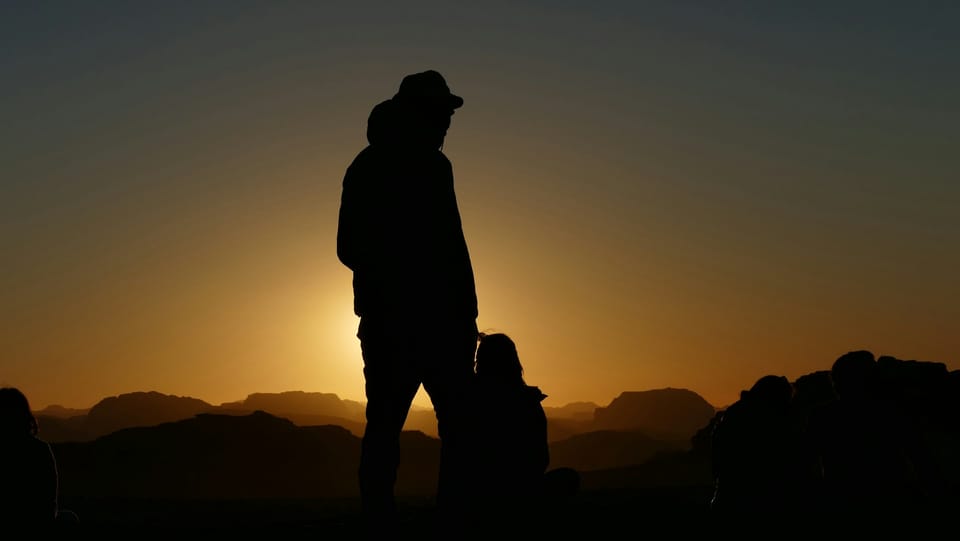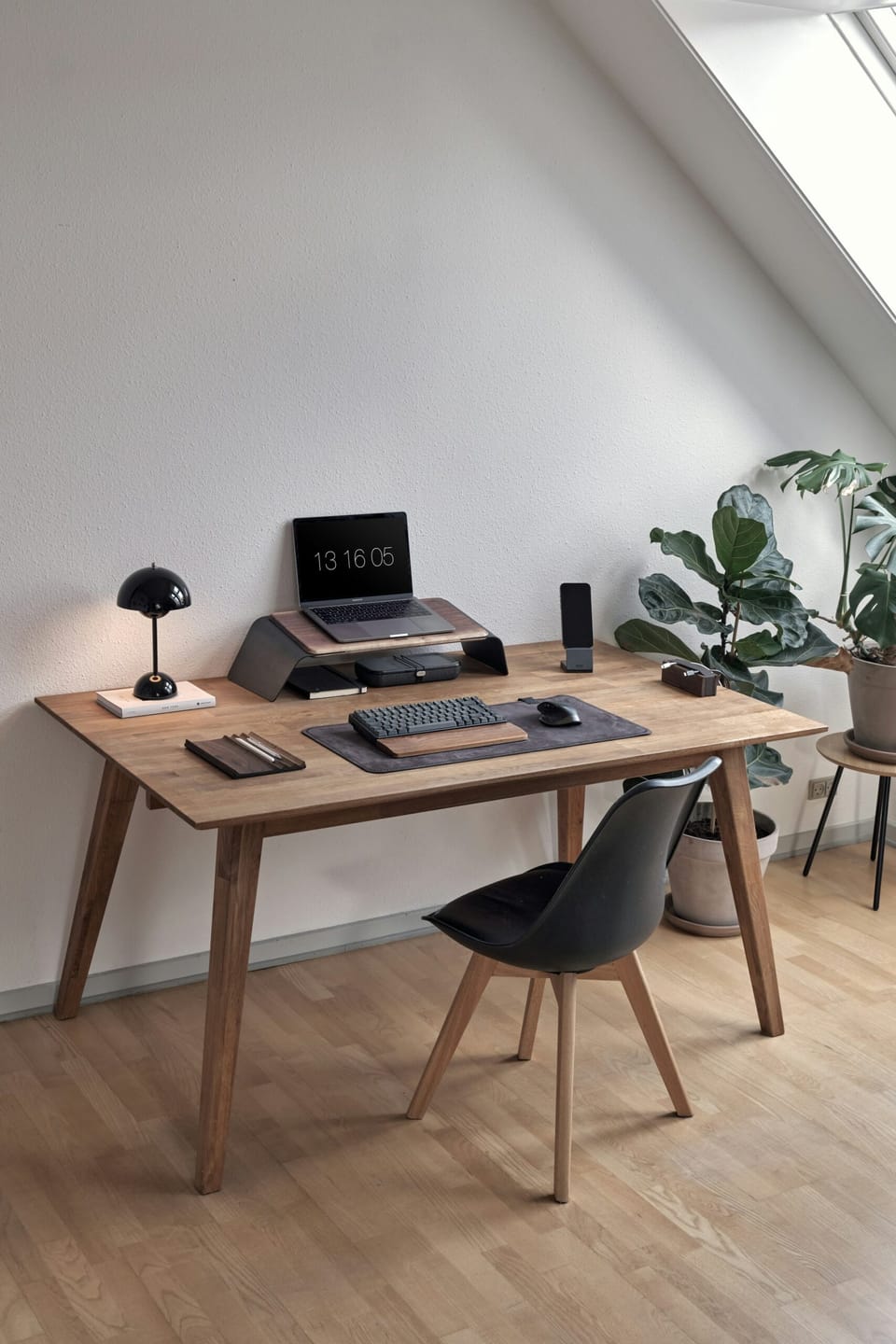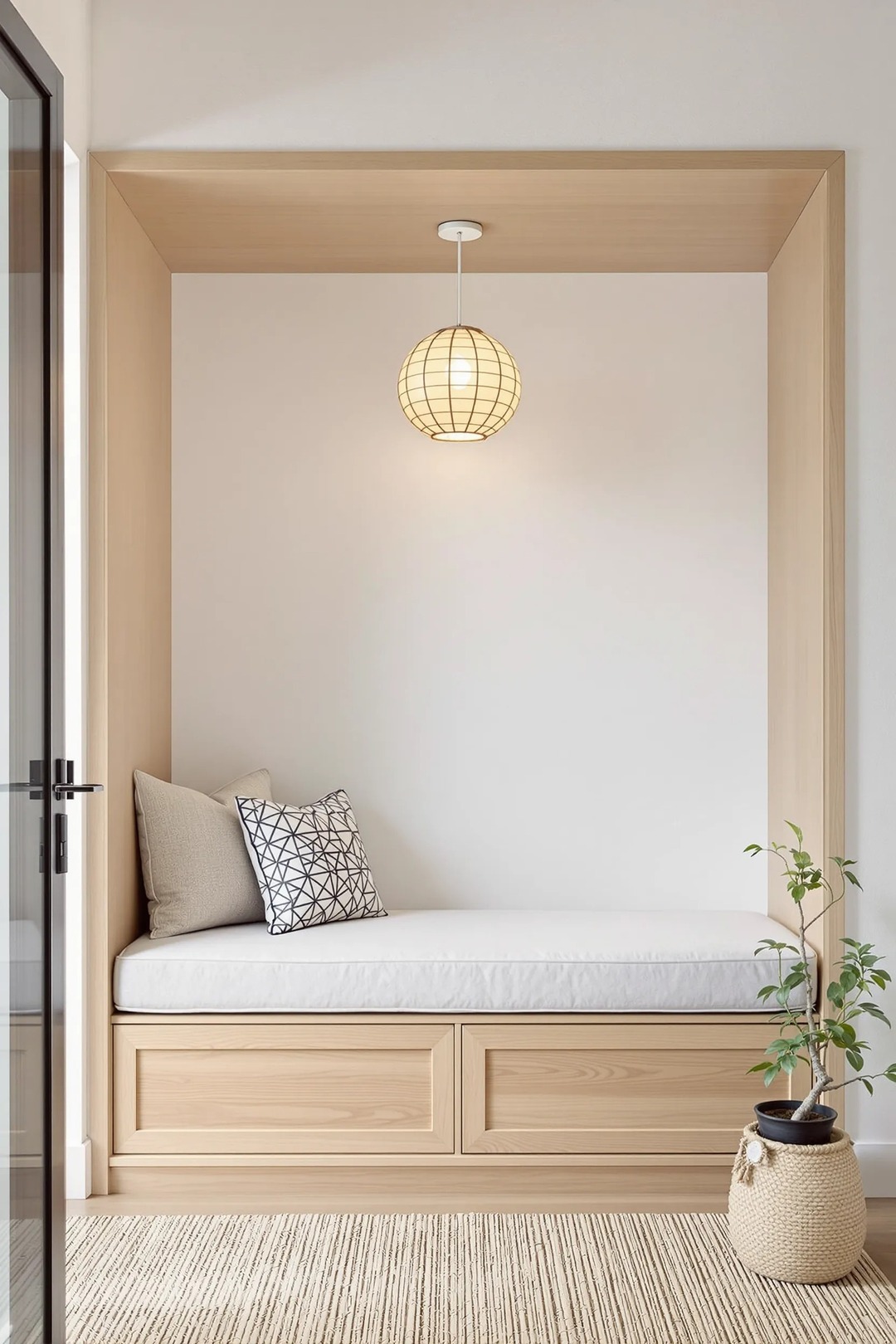Minimalist 'Jude' Tiny House Offers Off-Grid Getaway
Tucked away in nature, the Jude tiny house offers a serene escape with off-grid functionality and sleek minimalist design. Discover how this compact space delivers big on sustainability and comfort.

What can't the mighty tiny house do? As many of us are already beginning to realize, tiny houses are broadly versatile: not only can they serve as affordable homes for first-time homeowners or downsizing retirees, but they can also be used as compact and energy-efficient accommodations for eco-tourists looking to get away from the frenetic hubbub of the city. In this case, tiny houses could offer an attractive, low-impact alternative to the high environmental impact of hotels (or similarly structured buildings) within the hospitality industry.
Australia's CABN is one such company offering guests a chance to recharge their proverbial batteries in an off-grid and sustainable way. Nestled among the trees in a peaceful landscape near Adelaide Hills, Jude is one of CABN's custom-built tiny houses that guests can rent by the night, and where they can do some serious digital detoxing, sans WiFi. We get a delightful tour of Jude's warmly minimalist interior via Never Too Small:
There's a lot to like about this distinctive tiny house, which measures a cozy 150 square feet (14 square meters) in total, plus a king-sized loft. The dwelling's exterior is clad with durable, locally sourced marine ply, which the designers say holds up well to the region's tough climate – ranging from freezing cold winters to dry, hot summers. The marine ply has been stained natural brownish colors, some of it intentionally mismatched, in order to help the structure blend more into its landscape.
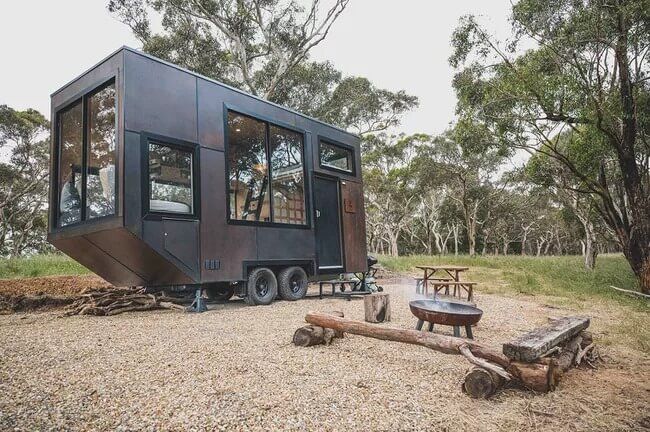
Stepping inside, one is immediately struck by the high ceilings and the number of large windows, which really help to bring lots of natural light in, and to give a greater sense of openness.
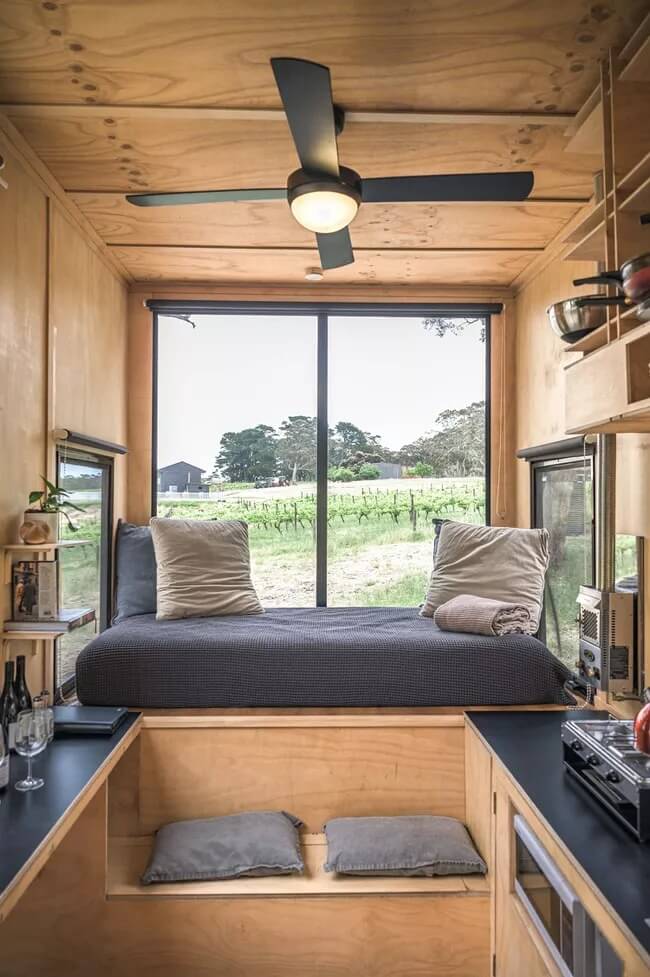
Like the exterior, Jude's interior walls and ceilings are made out of wood; here it's an Australian plywood. With so much wood everywhere, everything seems to uniformly blend in. Of course, the wood also adds a warm and textured contrast to the black-toned countertops and fixtures, which serve to heighten this tiny home's modern aesthetic. As Shane Laidlaw, CABN designer and marketing media coordinator, explains:
"In designing a small, minimalist space, we wanted to use materials that are simple and complemented each other."
Large picture windows surround the wide daybed, which is located at one end of the little house and placed on top of a platform. These windows provide fantastic views of the surrounding scenery. Visitors can lower the window coverings to create some privacy if desired.
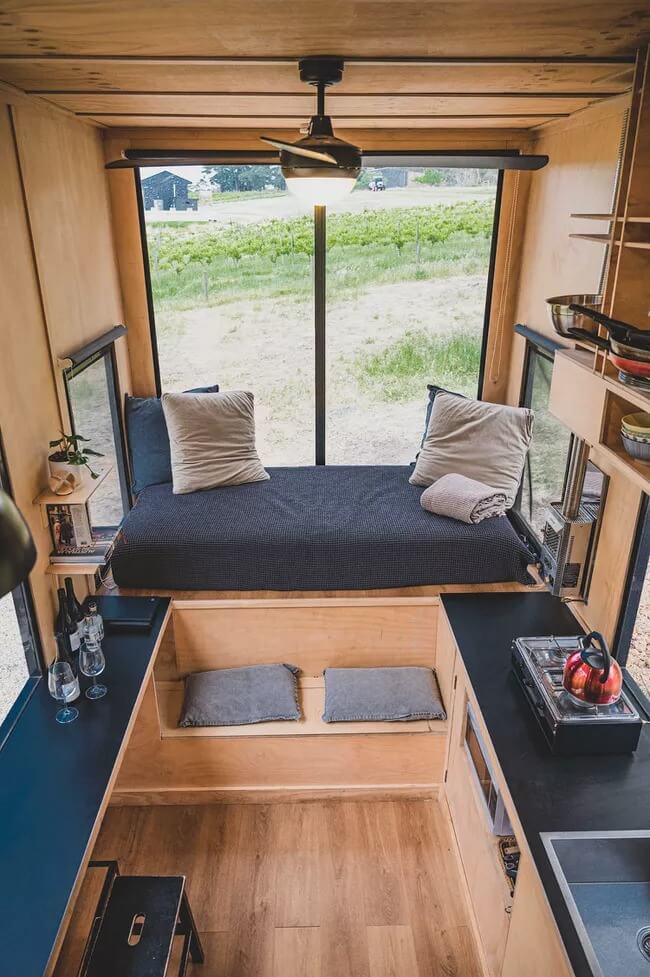
A portable, two gas burners, mini-refrigerator, microwave, and space-saving storage for numerous utensils are all included in the compact kitchen.
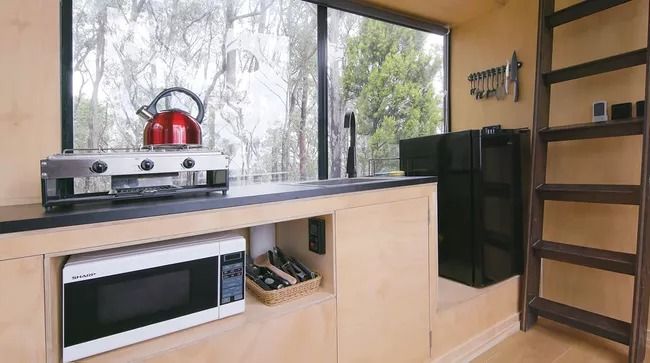
A closer look at the specially constructed, open-shelf arrangement for keeping pots, pans, plates, and glasses conveniently in sight.
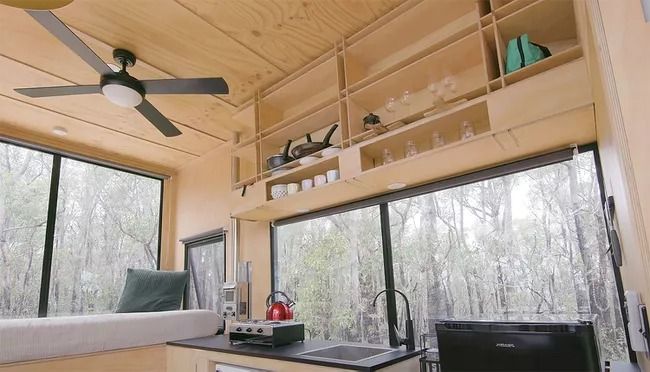
The multifunctional counter is located right across from the kitchen, and can be used as a place to eat, play board games or prepare meals while soaking in the outside view. The ebony-colored stools here also function as step ladders to help guests reach items stored on shelves above.
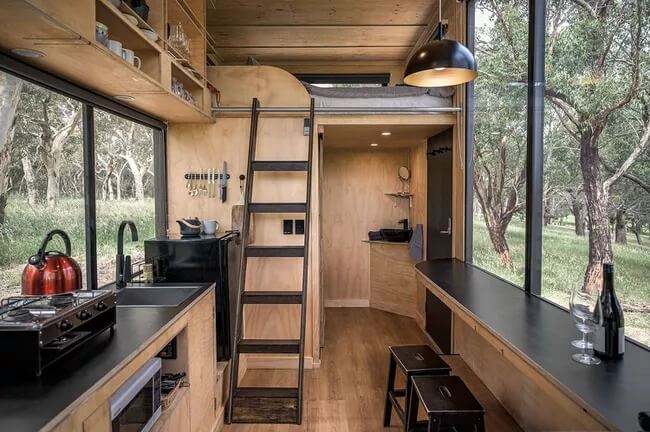
Jude's king-sized sleeping loft is accessible via a ladder that can be conveniently stored away when not in use. Up above, the loft features wrap-around windows that provide great views of the valley – a refreshing way to wake up and reconnect with nature.
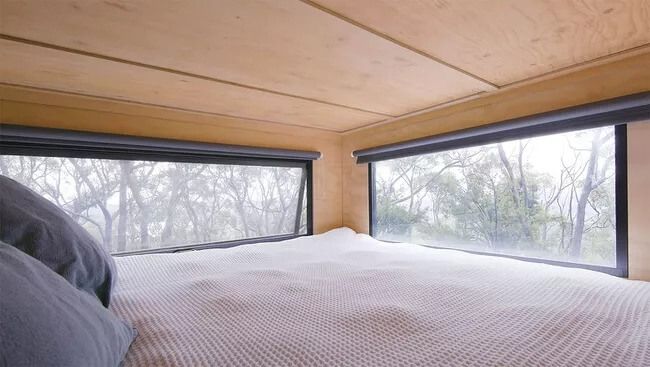
Below the sleeping loft, we have the bathroom, which is hidden behind Japanese-inspired sliding screen doors. Sliding doors were used because they use less space than regular doors that require more floor area to swing open.
Inside the bathroom, we have a composting toilet, and a unique shower tub that has been made from a reclaimed (and waterproofed) wine barrel that comes from a neighboring winery.
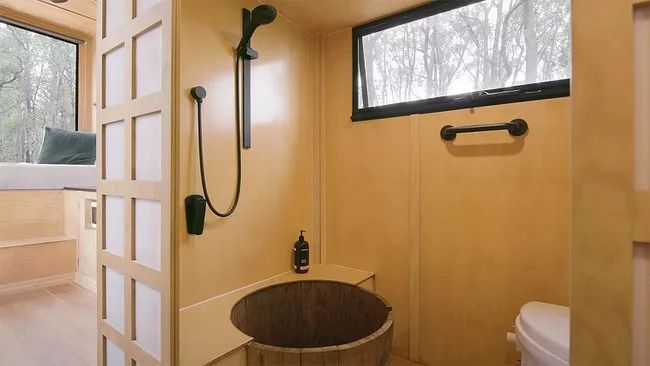
To allow easier access to another sink to all guests staying in the house, the bathroom sink is located outside of the bathroom, so one doesn't have to wait for the other person to finish showering in order to brush one's teeth.
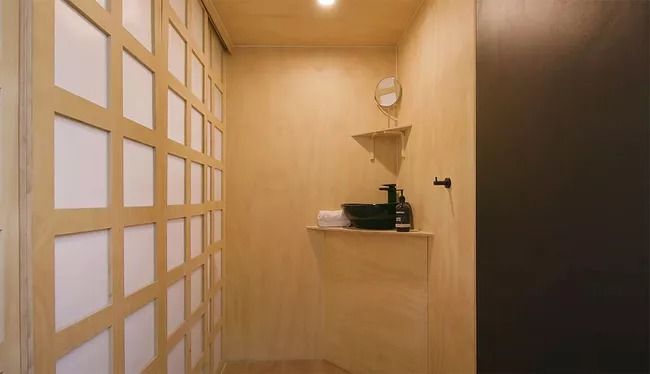
As it's made for an off-grid, low-impact getaway, Jude is powered by solar panels on its roof, and uses an ultra-efficient gas heater to warm up its tiny interior. For water, it uses a combination of rainwater harvesting or water deliveries during the dry months. In any case, the concept behind CABN's accommodations is to allow guests to do a digital detox in a nature-friendly way, while also offering them a chance to try out the off-grid lifestyle, the tiny house way. To find out more information on locations, rates, and more, visit CABN, and on Facebook and Instagram.





